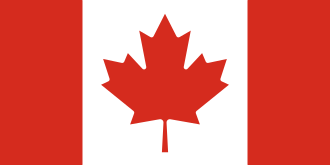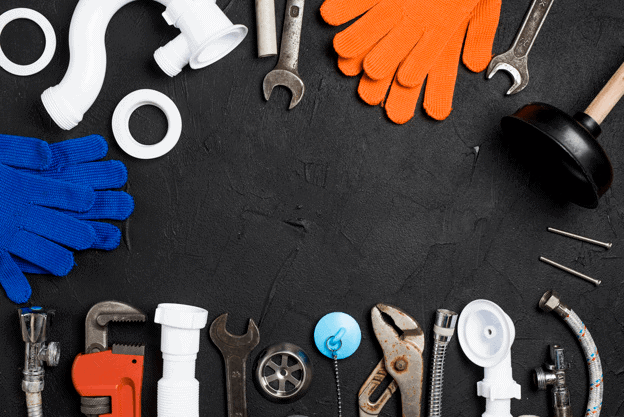Seasonal changes can have a big impact on your home’s plumbing. In Canada, where winters are harsh, springs are wet, summers can bring heavy rains, and autumns prepare us for the cold, your plumbing faces different challenges throughout the year. Understanding how each season affects your system can help you prevent costly damage, avoid emergencies, and keep everything running smoothly.
In this guide, we’ll walk through how weather impacts plumbing, the most common problems in each season, and simple steps you can take to protect your home. We’ll cover seasonal plumbing maintenance, common plumbing problems in winter, and share Canadian winter plumbing tips. You’ll also find practical checklists and advice you can start using right away.
Understanding Canada’s Climate and Plumbing Systems
Canada’s climate is diverse, from the freezing northern territories to the milder coastal regions. Most of the country experiences long, cold winters, making cold-weather plumbing systems essential. These systems often need deeper buried pipes to avoid frost, as frost depth in some areas can exceed 2 metres.
Canada’s Plumbing Code provides rules that guarantee safety and long-lasting performance in cold climates. Seasonal changes, like freeze-thaw cycles, can stress pipes and connections, leading to leaks or bursts.
Good seasonal home maintenance in Canada means understanding your local climate zone, checking insulation around pipes, and keeping drainage systems clear year-round.
Winter Plumbing Challenges in Canada
Why Cold Weather Damages Plumbing
When temperatures drop, water inside pipes can freeze, expanding and causing pipes to burst. Even partial freezing reduces water pressure and stresses fittings. Frequent freezing and thawing put strain on pipe joints, making older plumbing more likely to fail.
Extra Risks in Winter:
- Power outages in extreme cold leave homes without heating, increasing freezing risks
- Ice buildup in gutters and downspouts can redirect water toward your foundation
- Basement plumbing is especially vulnerable if unheated
Preventing Frozen Pipes
Frozen pipe prevention in Canada starts with insulating exposed pipes in unheated areas like basements, crawlspaces, attics, and garages. Heat tape or heat tracing cables can keep water moving in vulnerable lines. Always disconnect outdoor hoses, shut off exterior water lines, and drain them.
Additional Tips:
- Install frost-proof outdoor faucets
- Seal cracks in walls near plumbing
- Keep faucets running at a slow drip during freezing weather so water continues moving.
Winter Plumbing Maintenance Checklist
- Insulate pipes in cold areas
- Winterize outdoor faucets
- Maintain indoor temperatures above 12°C
- Keep cabinet doors open under sinks on very cold nights
- Have backup heat sources ready
- Test the sump pump and backup power supply
Spring Plumbing Risks and Solutions
Melting Snow and Sewer Backup Risks
As snow melts, excess water can overwhelm storm sewers, causing backups into basements. Installing a backwater valve is key for sewer backups and avoiding costly water damage.
Importance of Sump Pump and Backwater Valves
Your sump pump should be tested before the thaw. Spring flooding can be unpredictable, so follow sump pump maintenance tips like cleaning the pit, checking the float switch, and ensuring the discharge line is clear of ice or debris.
Extra Protection:
- Install a battery backup for your sump pump
- Use high-capacity pumps in flood-prone areas
- Adjust the yard’s slope so rainwater naturally drains away from the foundation of your home.
Spring Plumbing Checklist
- Test the sump pump and backwater valve
- Clear gutters and downspouts
- Ensure grading slopes water away from your home
- Inspect basement walls for signs of seepage
- Clean storm drains near your property
Summer Plumbing Issues in Canada
Water Demand and Heat-Related Plumbing Stress
Warm seasons drive up water demand for sprinklers, pools, and cooling units. This added demand can stress your water lines and lower the overall pressure. Installing an expansion tank can reduce stress on pipes.
Additional Concerns:
- Hard water scaling increases with higher temperatures
- Outdoor plumbing lines for sprinklers are prone to leaks if not maintained
Summer Storms and Flooding Risks
Heavy summer rains can overwhelm drainage systems. Regular drainage system maintenance prevents blockages that lead to flooding. Consider flood prevention devices if your area is prone to storms.
Autumn Plumbing Preparation
Seasonal Maintenance Before Winter
Autumn is your last chance to prepare before freezing temperatures. Remove hoses, empty outdoor faucets, and clear gutters to stop ice from forming.
Preparing Plumbing Systems for Cold Weather
Add insulation to pipes in unheated areas, seal basement windows, and review your early freeze prevention checklist. Fix any leaks before winter, as even small drips can freeze and cause bursts.
Autumn Plumbing To-Do List:
- Drain sprinkler systems
- Inspect water heater efficiency
- Clean the sump pump pit and test the operation
- Schedule a professional plumbing inspection
Regional Plumbing Considerations Across Canada
Prairie Provinces
Quick temperature shifts from Chinooks make pipes expand and shrink, often causing cracks.
Ontario & Québec
Combined sewer systems are common, meaning heavy rains or snowmelt can cause backups. Plumbing in Toronto and plumbing in Brampton often involve flood prevention upgrades.
Atlantic Canada
Storm surges and heavy rains mean sump pumps and backwater valves are vital.
Northern Canada
Permafrost requires unique plumbing designs, often using above-ground insulated pipes.
Essential Plumbing Devices for Seasonal Protection
- Backwater valves: Stop sewage from flowing back inside your home.
- Sump pumps: Remove groundwater before it enters your basement
- Heat tracing cables: Keep vulnerable pipes from freezing
- Backflow preventers: Protect drinking water from contamination
Seasonal Plumbing Maintenance Calendar
Winter: Insulate pipes, maintain heating, check sump pump
Spring: Check the sump pump, clean drains, and look over pipes for leaks.
Summer: Inspect sprinklers, keep drainage clear, and look out for pressure problems.
Autumn: Disconnect hoses, drain outdoor taps, and insulate pipes
Cost, Insurance, and Government Rebates
Many home insurance policies only include flood and sewer backup coverage as an extra option. Some cities, like Toronto, Ottawa, and Winnipeg, offer rebates for installing sump pumps or backwater valves.
When to Call a Professional Plumber
If you notice low water pressure, recurring clogs, or visible leaks, call a licensed plumber. Pick a plumbing company that understands cold-weather systems and seasonal upkeep.
For regional needs, look for an expert plumber in Toronto who understands local building codes and weather challenges.
Conclusion & Key Takeaways
Your plumbing system works hard all year, facing different challenges in each season. By following seasonal maintenance tips, using the right protective devices, and knowing when to call a professional, you can prevent damage, save money, and keep your home safe.
Proactive care today means fewer emergencies tomorrow.



